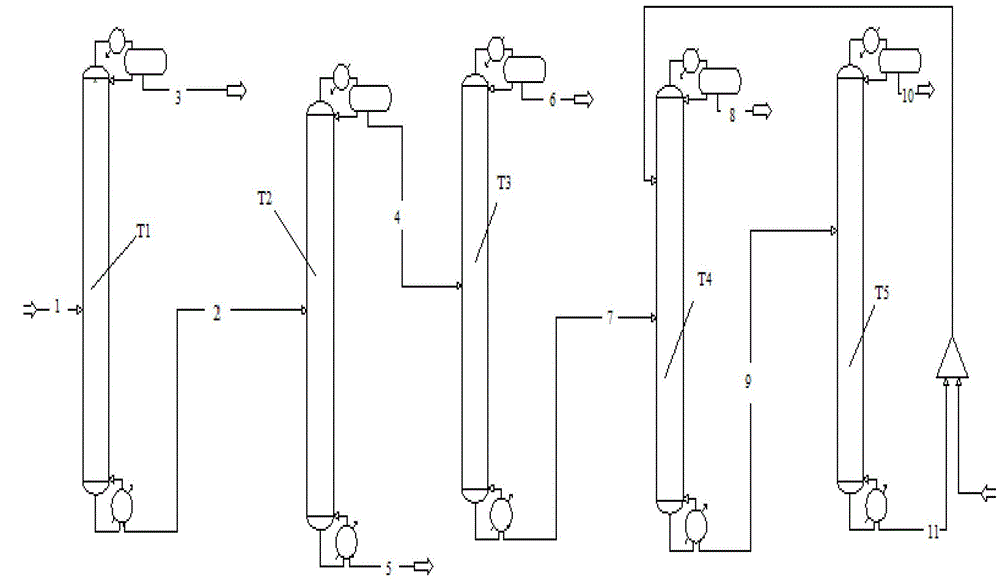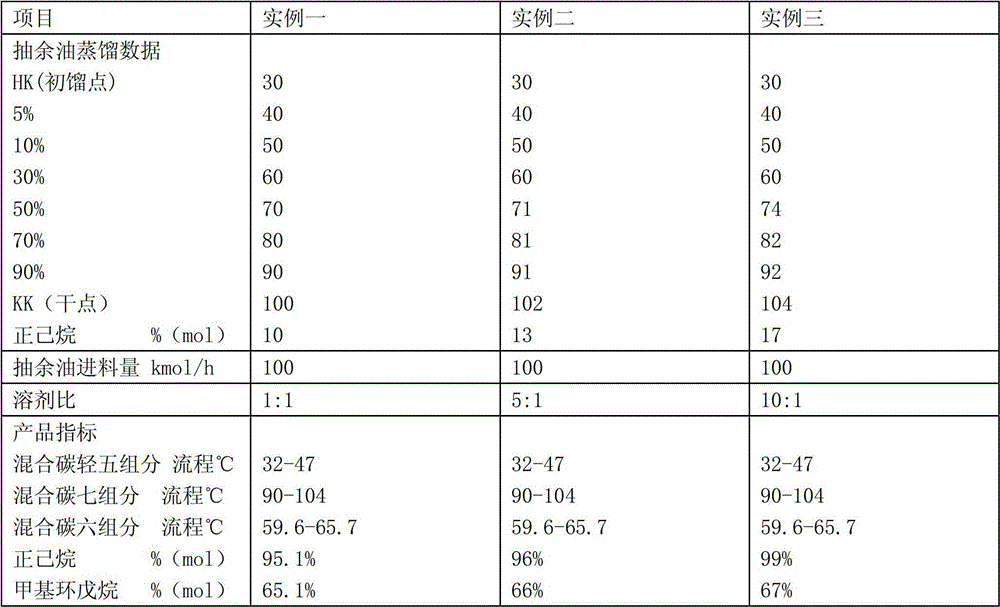Process for producing n-hexane by using reformate raffinate oil
A process method, n-hexane technology, applied in the field of high-purity n-hexane production, can solve the problems of high energy consumption, low octane number, low utilization rate, etc.
- Summary
- Abstract
- Description
- Claims
- Application Information
AI Technical Summary
Problems solved by technology
Method used
Image
Examples
Embodiment Construction
[0019] Such as figure 1 Shown is a schematic flow chart of an embodiment of the present invention. After the raffinate oil 1 is pretreated in the decarbonization five tower T1, the low-boiling mixed carbon light five component 3 is distilled from the top of the T1 tower, and the mixed carbon six carbon seven component 2 at the bottom of the tower enters the decarburization seven tower T2, At this time, the number of theoretical plates of decarburization five tower T1 is 48, the feed position is the 28th block, the operating pressure is 200kPa, the operating temperature is 57-106°C, the reflux ratio is 5-6, and the top flow is 32-47°C; mixed carbon The six carbon seven components 2 are treated by the decarburization seventh tower T2, and the mixed carbon seven component 5 is discharged from the bottom of the tower. The 20th block, operating pressure 120kPa, operating temperature 68-112 ° C, reflux ratio 4-5, unseparated mixed components including n-hexane-methylcyclopentane mi...
PUM
 Login to View More
Login to View More Abstract
Description
Claims
Application Information
 Login to View More
Login to View More - R&D
- Intellectual Property
- Life Sciences
- Materials
- Tech Scout
- Unparalleled Data Quality
- Higher Quality Content
- 60% Fewer Hallucinations
Browse by: Latest US Patents, China's latest patents, Technical Efficacy Thesaurus, Application Domain, Technology Topic, Popular Technical Reports.
© 2025 PatSnap. All rights reserved.Legal|Privacy policy|Modern Slavery Act Transparency Statement|Sitemap|About US| Contact US: help@patsnap.com


